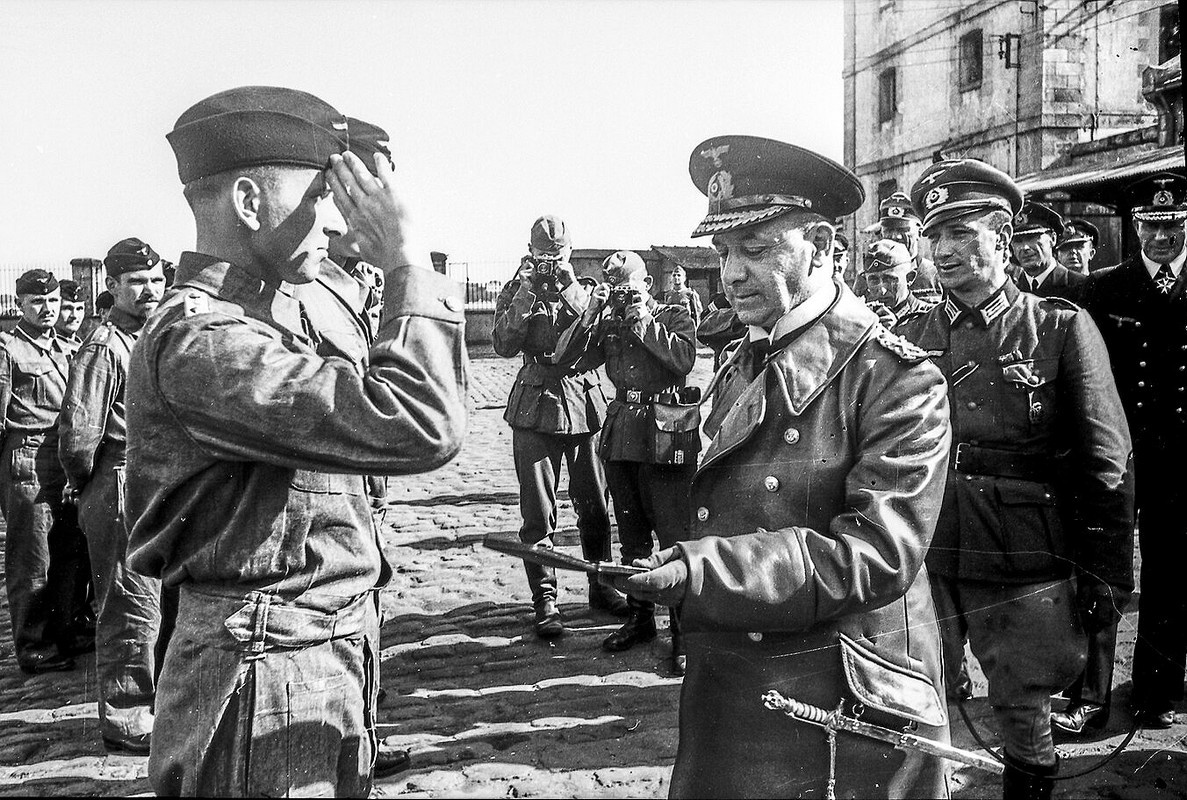
Grossadmiral Erich Raeder
Grossadmiral Erich Raeder (1876–1960) was a pivotal figure in 20th-century naval history, serving as the Commander-in-Chief of the German Navy (Kriegsmarine) from 1928 until 1943. As the highest-ranking officer in the German Navy during the interwar period and the early years of World War II, Raeder oversaw the transformation of Germany’s modest interwar naval force into a technologically sophisticated fleet. His strategic vision, while ultimately constrained by political interference and logistical challenges, shaped the Kriegsmarine’s operational doctrines and influenced naval architecture, tactics, and long-term planning.
Naval Background and Rise
Erich Johann Albert Raeder began his naval career in 1894, during the German Empire’s naval expansion under Admiral Alfred von Tirpitz. Trained in traditional surface fleet operations, Raeder was a product of the Kaiserliche Marine, steeped in the Mahanian belief in decisive battle via large capital ships. His early service included roles aboard cruisers and battleships, as well as in staff and educational assignments. His technical understanding of naval command and operations led to rapid promotions, culminating in his appointment as Chief of Naval Command in 1928.
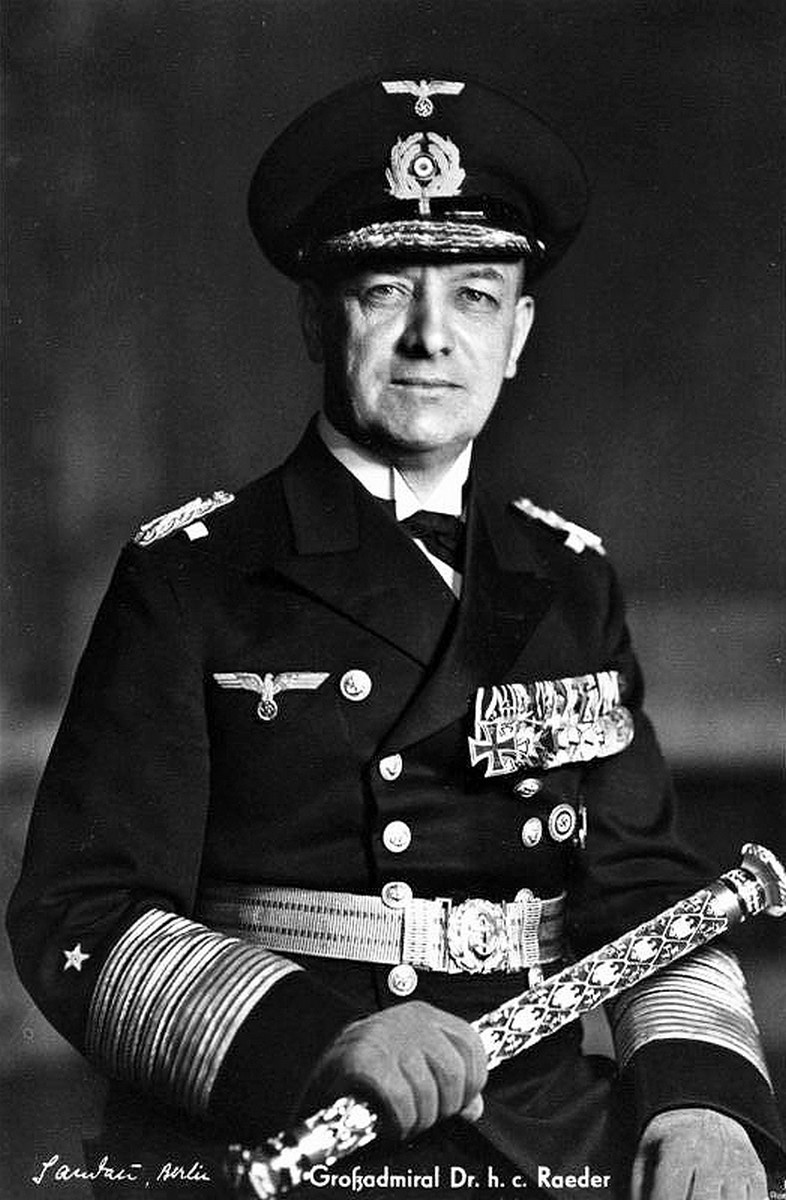
Readers navy ranks
Seekadett (Sea cadet): 26 Apr 1894
Fähnrich zur See (Midshipman): 13 May 1895
Leutnant zur See (Acting Sub-Lieutenant): 25 Oct 1897
Oberleutnant zur See (Sub-Lieutenant): c. 1900
Kapitänleutnant (Lieutenant): c. 1905
Korvettenkapitän (Lieutenant-Commander): 15 Apr 1911
Fregattenkapitän (Commander): c. 1915
Kapitän zur See (Captain): 19 Nov 1919
Konteradmiral (Rear-Admiral): 1 Aug 1922
Vizeadmiral (Vice-Admiral): 1 Apr 1925
Admiral (Admiral): 1 Oct 1928
Generaladmiral (General-Admiral): 10 Apr 1936
Grossadmiral (Grand Admiral): 1 Apr 1939
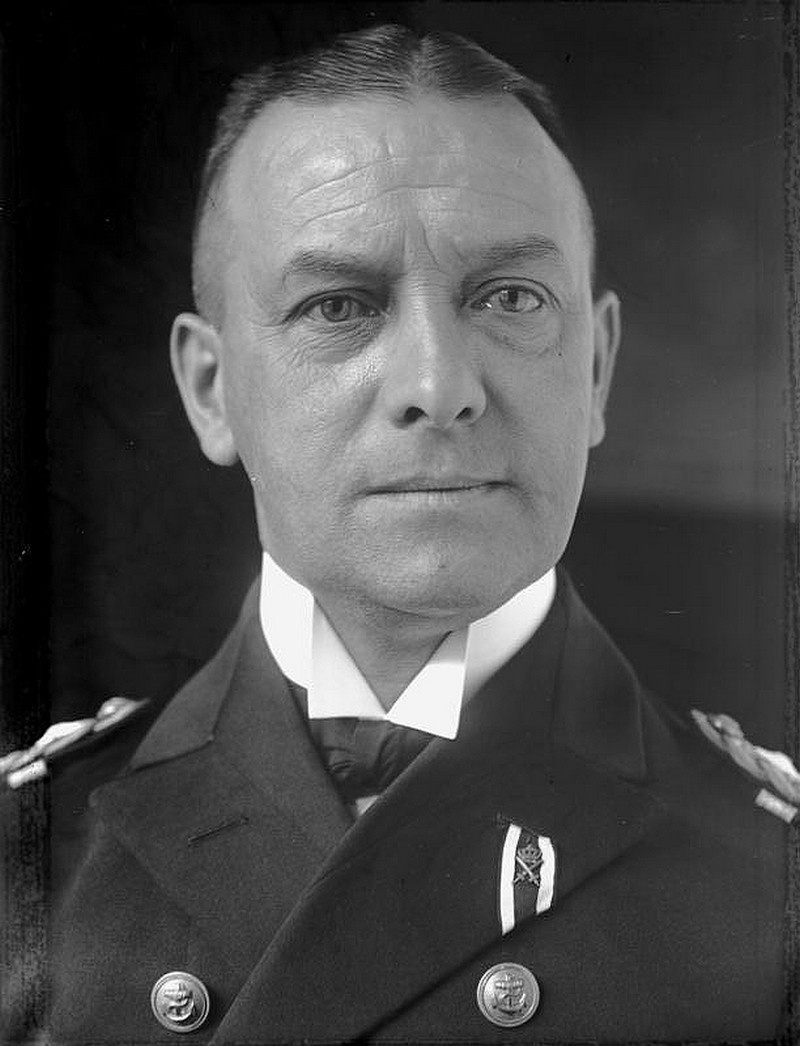
Rebuilding the Fleet: Z Plan and Strategic Vision
One of Raeder’s most ambitious contributions was the conceptualization and advocacy of the Z Plan (1939), a long-term naval rearmament program intended to establish German sea power by 1948. Raeder’s Z Plan envisioned a balanced fleet capable of challenging the Royal Navy. It included (in metric tons):
- 10 battleships (6 new “H”-class ships with 55,000 tons and 40.6 cm guns, plus 2 Scharnhorst and 2 Bismarck-class ships, which were already under construction);
- 12 armoured ships of a new type of 20,000 tons (project “Kreuzer P”), plus the existing 3 armoured ships of the Deutschland class of 10,000 t;
- 8 aircraft carriers of 20,000 t and 12,000 t, of which two 20,000 t ships had already been under construction since 1936 (Graf Zeppelin and aircraft carrier B);
- 5 10,000 t Admiral Hipper-class heavy cruisers resulting from the Fleet Agreement and under construction;
- 24 light cruisers of the new 8,000 t type “M”, the existing 6 cruisers from the Weimar Republic were to become school cruisers from 1943;
- 36 “scout cruisers”, a kind of large destroyer of about 5,000 tons;
- 70 destroyers;
- 78 torpedo boats;
- 249 submarines (U-boot), of which 162 are large, 27 special and 60 small submarines (Kleinst-U-boote);
as well as auxiliary ships and small craft (M, R, S boats).
The Z Plan was technically impressive, calling for advanced radar systems, enhanced armor schemes, and diesel propulsion in some classes. However, the plan was based on the assumption that war would not begin before 1945. When WWII started in 1939, the Z Plan was abruptly abandoned in favor of accelerated U-boat production under Dönitz’s guidance.
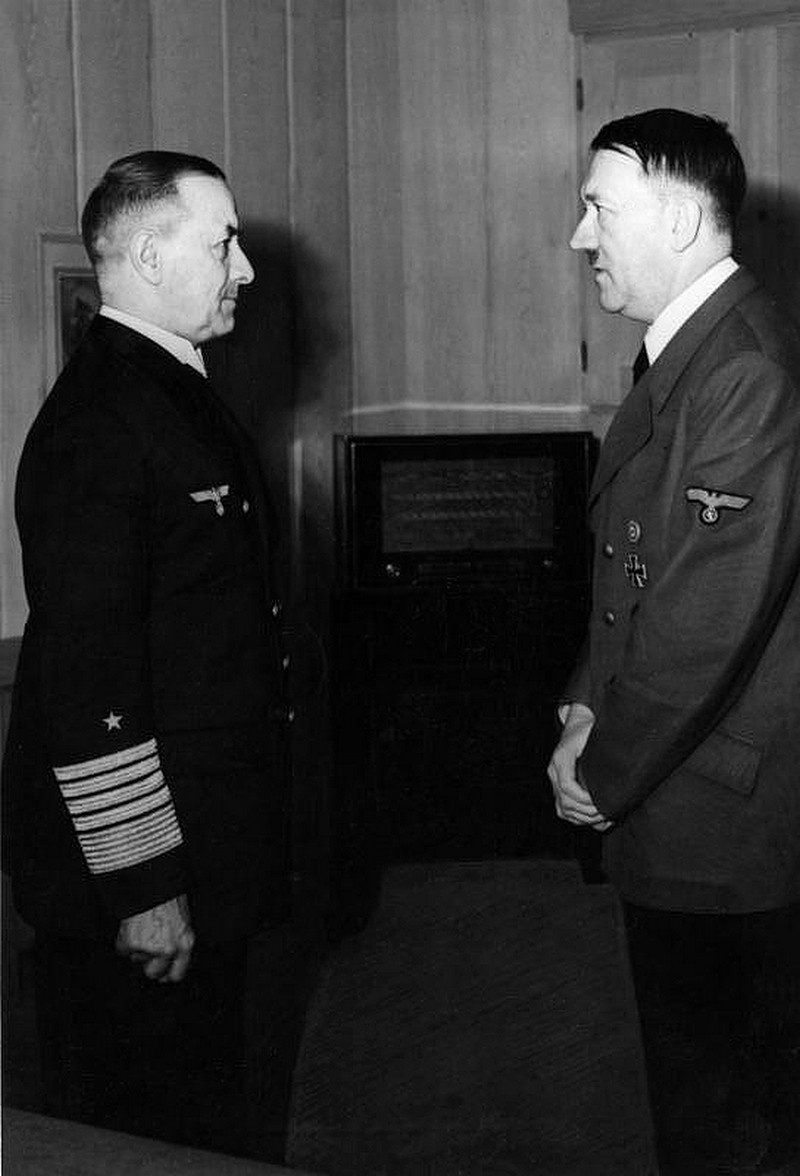
Surface Fleet Doctrine and Technical Challenges
Raeder believed in a commerce raiding strategy using surface ships—“guerre de course”—rather than decisive battleship engagements. This doctrine was partly born out of necessity, given Germany’s inferior naval strength compared to Britain’s Royal Navy. The most notable examples of this strategy were:
Admiral Graf Spee (Panzerschiff) – A heavily armed commerce raider with diesel propulsion and long-range capability.
Bismarck and Tirpitz – Technically advanced battleships featuring sophisticated fire-control systems, extensive compartmentalization, and heavy armor.
Raeder pushed for advanced technologies including:
- Radar systems (FuMO series) – Early use of radar in surface ships for targeting and reconnaissance.
- Radar countermeasures – Implementation of early ECM (Electronic Countermeasures).
- Armor innovation – The “all or nothing” armor scheme optimized for survivability in capital ships.
- Diesel propulsion – Experimental use on heavy cruisers and Panzerschiffe for extended range.
Despite these innovations, Raeder’s surface fleet was vulnerable due to limited access to open seas, lack of aircraft carrier support, and fuel constraints.
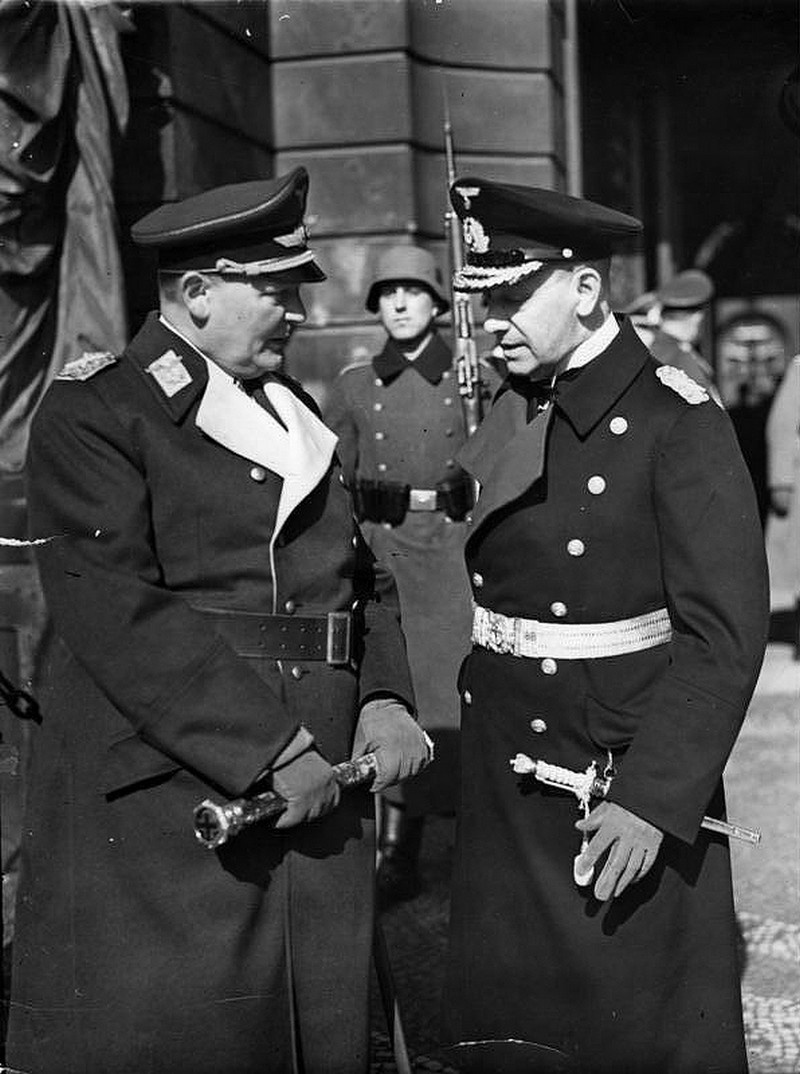
U-boat Policy and Tensions with Dönitz
Raeder was never a wholehearted supporter of U-boats as a primary naval strategy, although he recognized their utility. He initially emphasized surface combatants over submarines. However, Vice Admiral Karl Dönitz, an advocate of unrestricted submarine warfare, increasingly overshadowed Raeder’s influence by 1941. Their strategic and technical disagreements reflected diverging visions for the Kriegsmarine:
Raeder preferred balanced fleets and global naval power projection.
Dönitz prioritized U-boat mass production, wolfpack tactics, and technological miniaturization.
Eventually, Hitler’s frustration with surface fleet losses—particularly the sinking of Bismarck and loss of Scharnhorst—compelled Raeder to resign in January 1943. Dönitz then took command with a clear focus on submarine warfare.
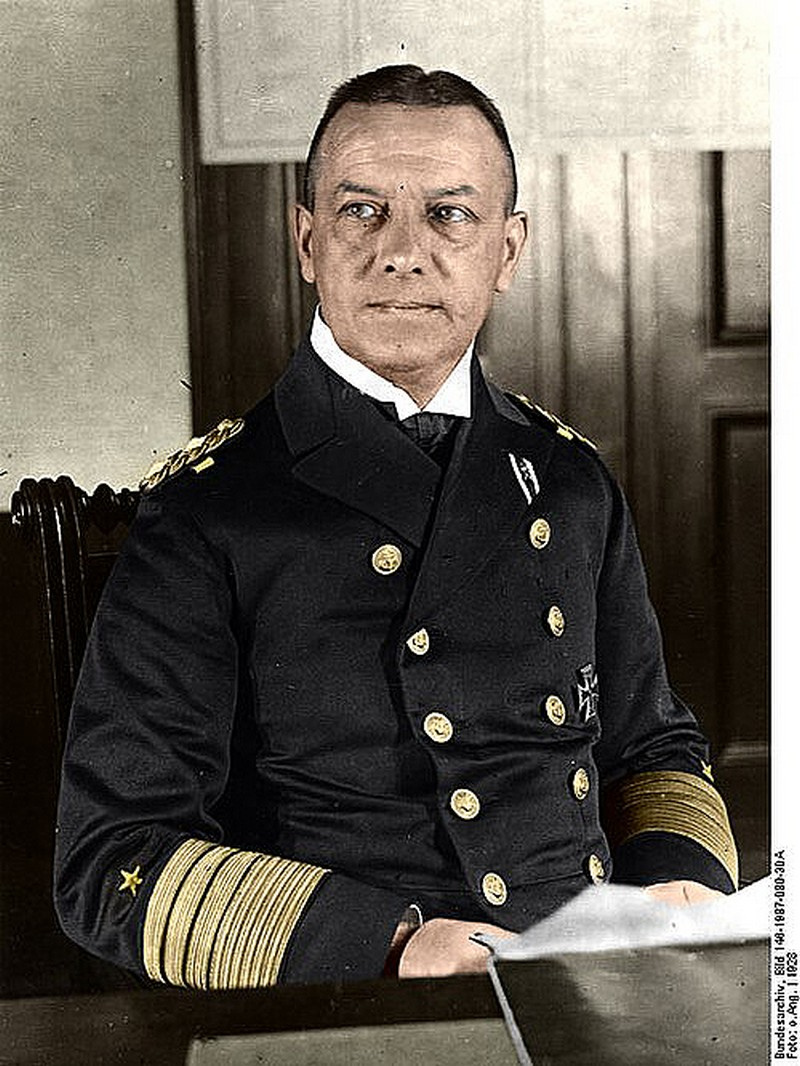
Technological Legacy and Evaluation
Raeder’s legacy is mixed. Technically, he helped rebuild the Kriegsmarine into a modern force within the limitations of the Treaty of Versailles and subsequent Anglo-German Naval Agreement. His focus on quality over quantity resulted in warships with superior design elements, such as:
- Advanced rangefinders and fire control.
- Complex compartmentalization for damage control.
- High-speed diesel engines with extended operational range.
Yet Raeder’s strategic assumptions failed to account for Germany’s geographic disadvantages and the overwhelming superiority of Allied naval production. His reliance on large surface units proved untenable without air cover or secure ports. The premature initiation of war in 1939 rendered his long-term strategy obsolete.
Postwar Judgment and Historical Impact
After the war, Raeder was tried at Nuremberg and sentenced to life imprisonment for planning and waging aggressive war. He was released in 1955 due to ill health. Despite his conviction, historians recognize Raeder as a technically capable officer who sought to re-establish German naval parity through innovation and disciplined doctrine.
His tenure represents the tension between traditional surface fleet ideology and the emerging dominance of submarines and air power in naval warfare. As such, Raeder stands as both a reformer and a figure caught in transition—between the old battleship era and the modern age of naval strategy.
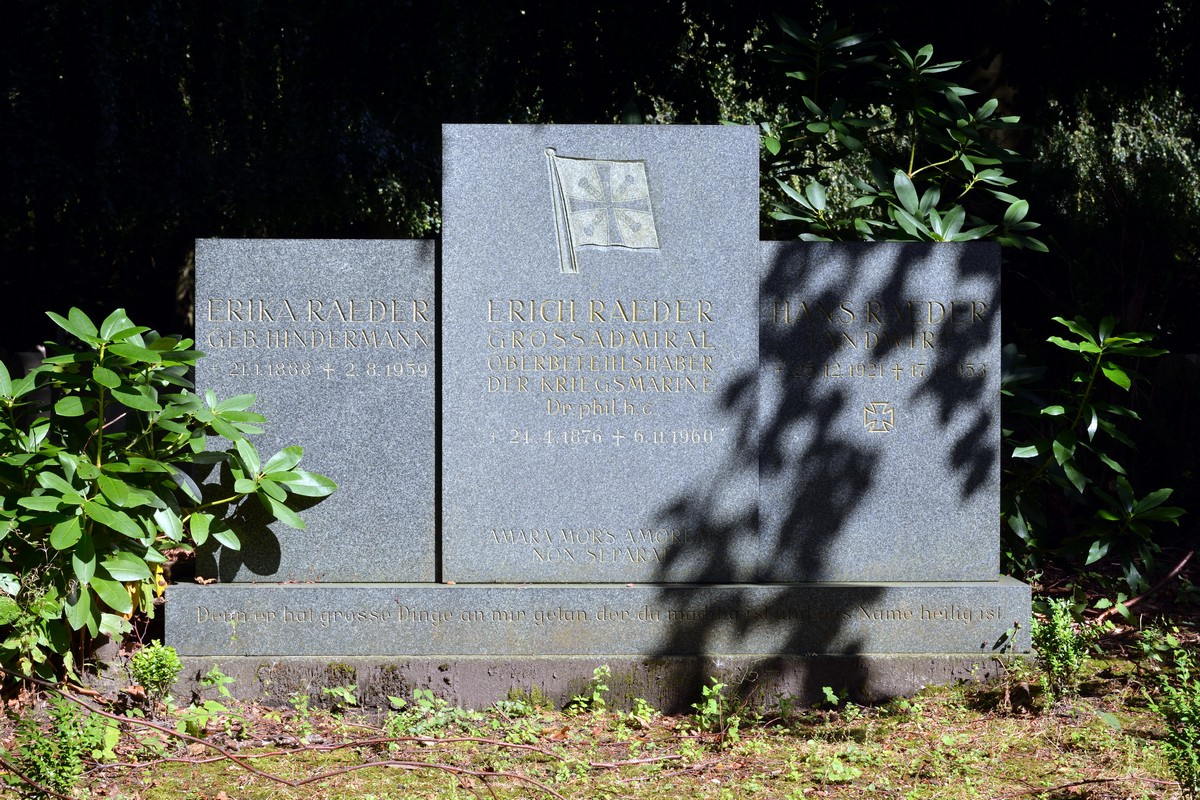
Death
Erich Reader outlived his second wife Erika and died of natural causes on November 6, 1960, five years after his release from Spandau. Erika Hindermann was Erich Raeder second wife, they had one daughter Anite. With his first wife Augusta he had three children, one is buried with Erich, his name is Hans Reader, born in 1921, died in 1953. Erich Rader was 84 years old when he died, his wife Erika was 71 when she died in 1959. Erich Rader is buried at the Nordfriedhof in Kiel, Germany. Karl Dönitz attended his funeral and gave the funeral speech, which was on November 12, 1960. Before he died, he wrote his memoirs in a book called “Mein leben” (My Life). He is buried with his wife Erika who passed away in 1959.
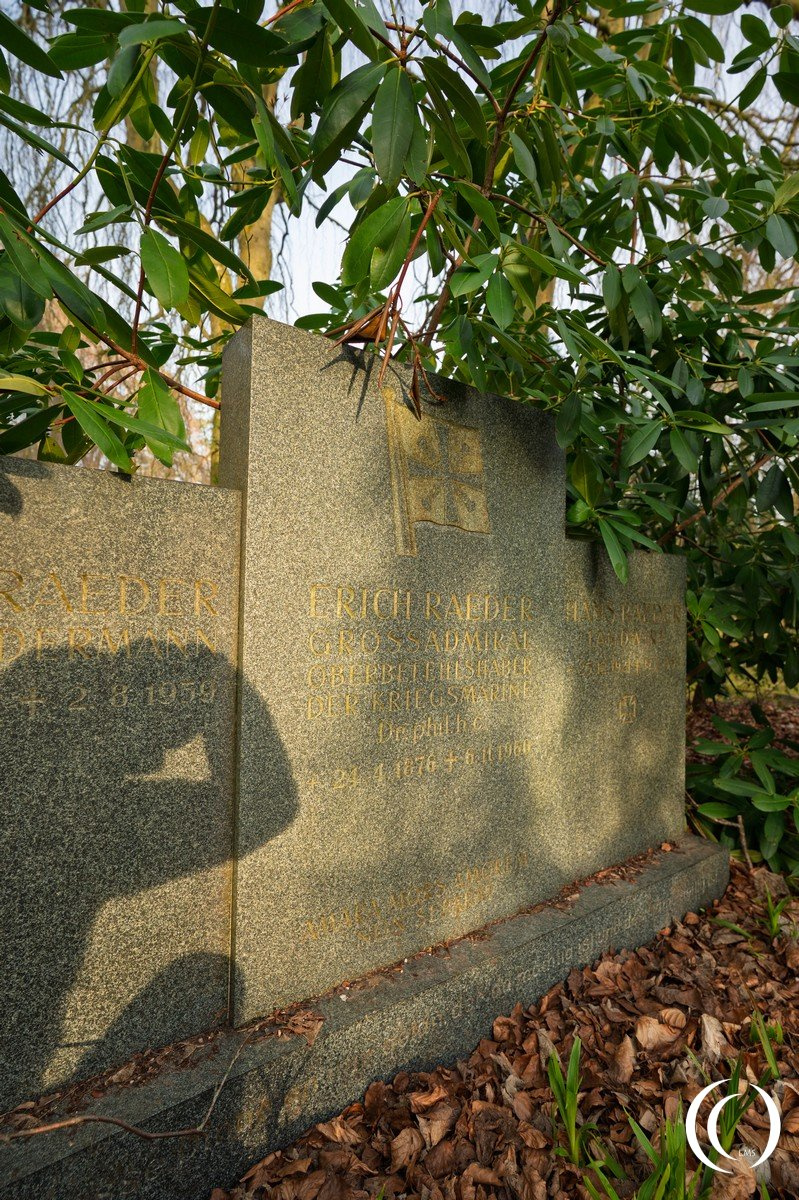
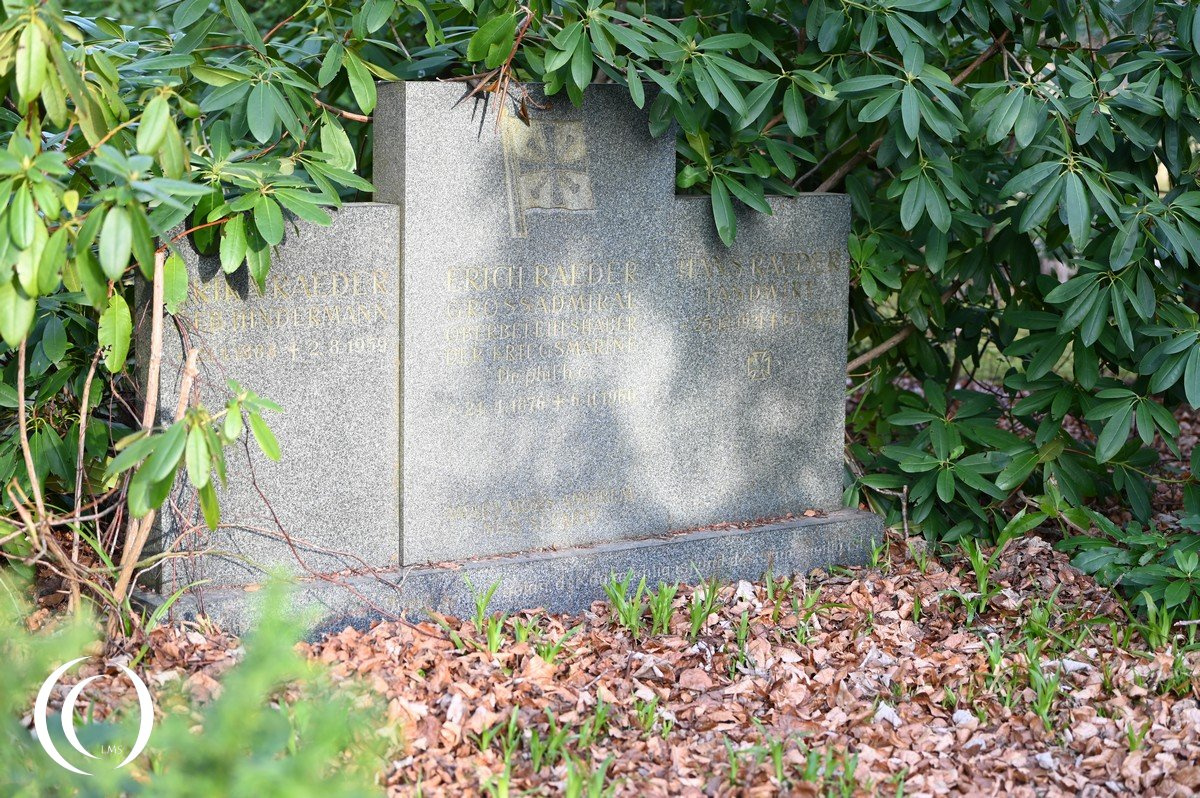
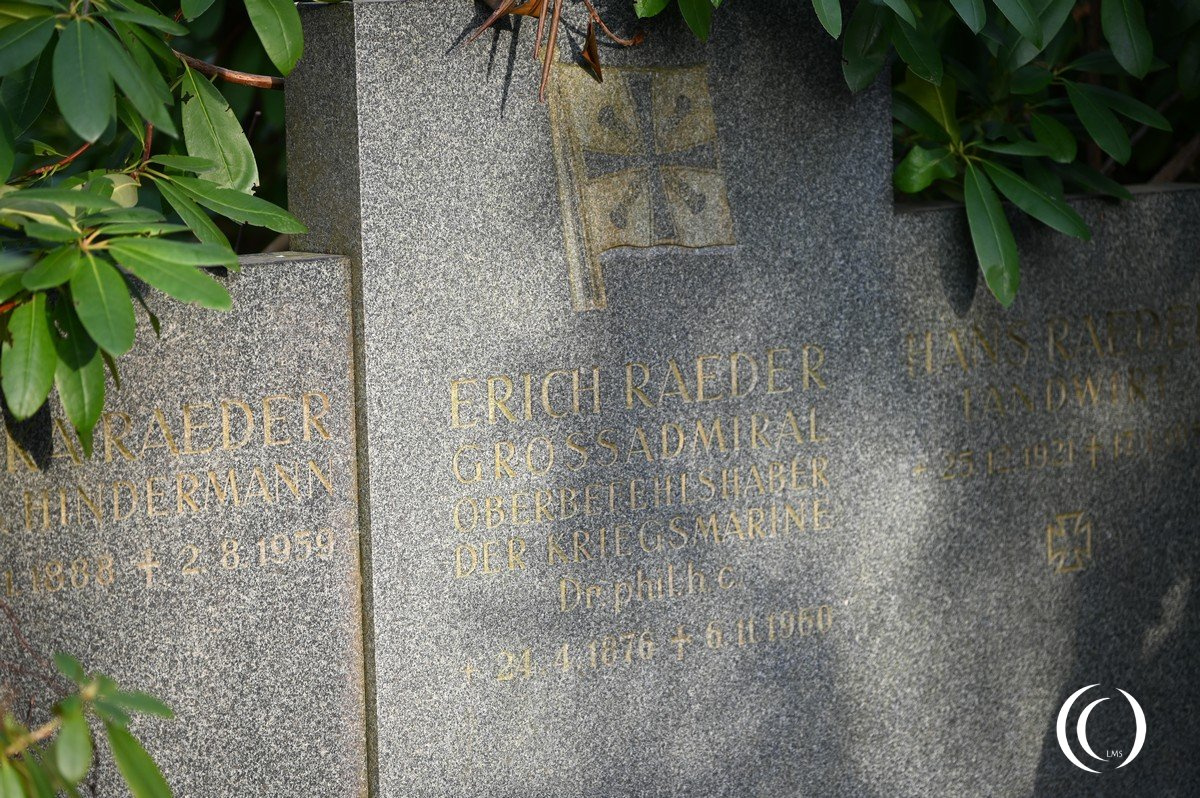
Visit
Erich Raeder’s grave can be found on the Nordfriedhof in the German town of Kiel. (Nordfriedhof, Kiel, Sleeswijk-Holstein, Duitsland; veld: XE, grave: 338 – p.s. although it seems easy to find, the XE did not show up on our map but X did, you have to look in this vicinity, it was a small path were the grave was found, it is a bit hidden under bushes and smaller as expected for a Grand Admiral of the Kriegsmarine).